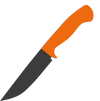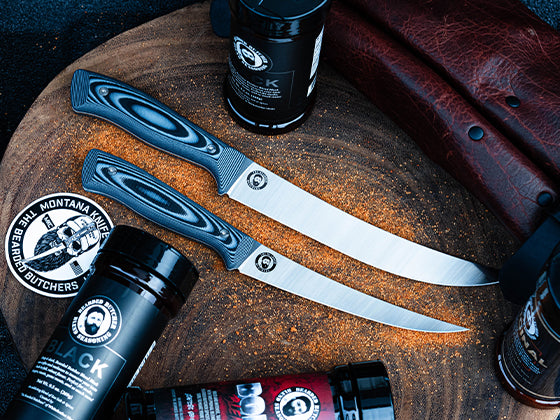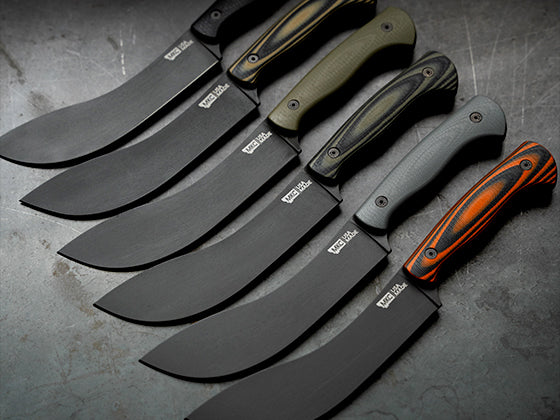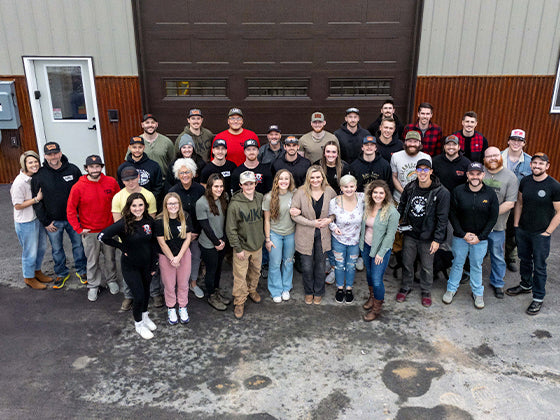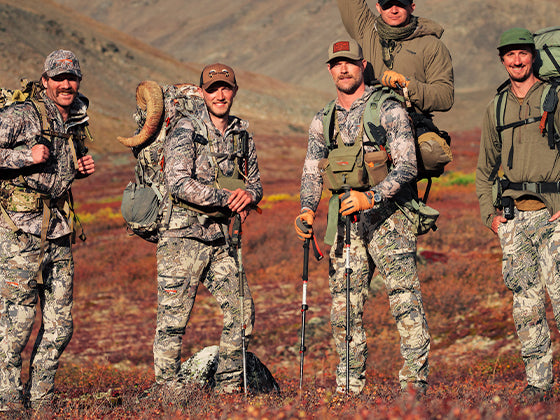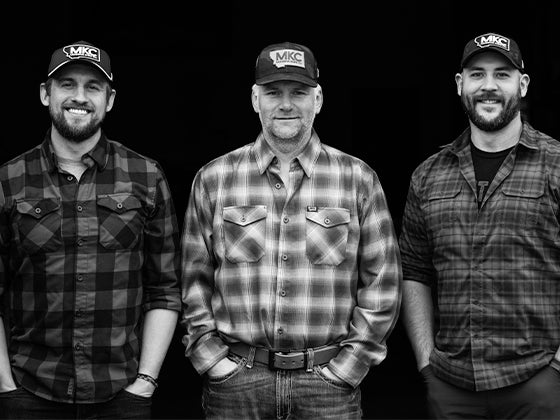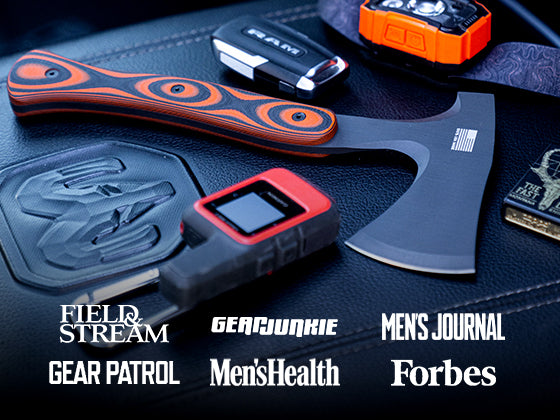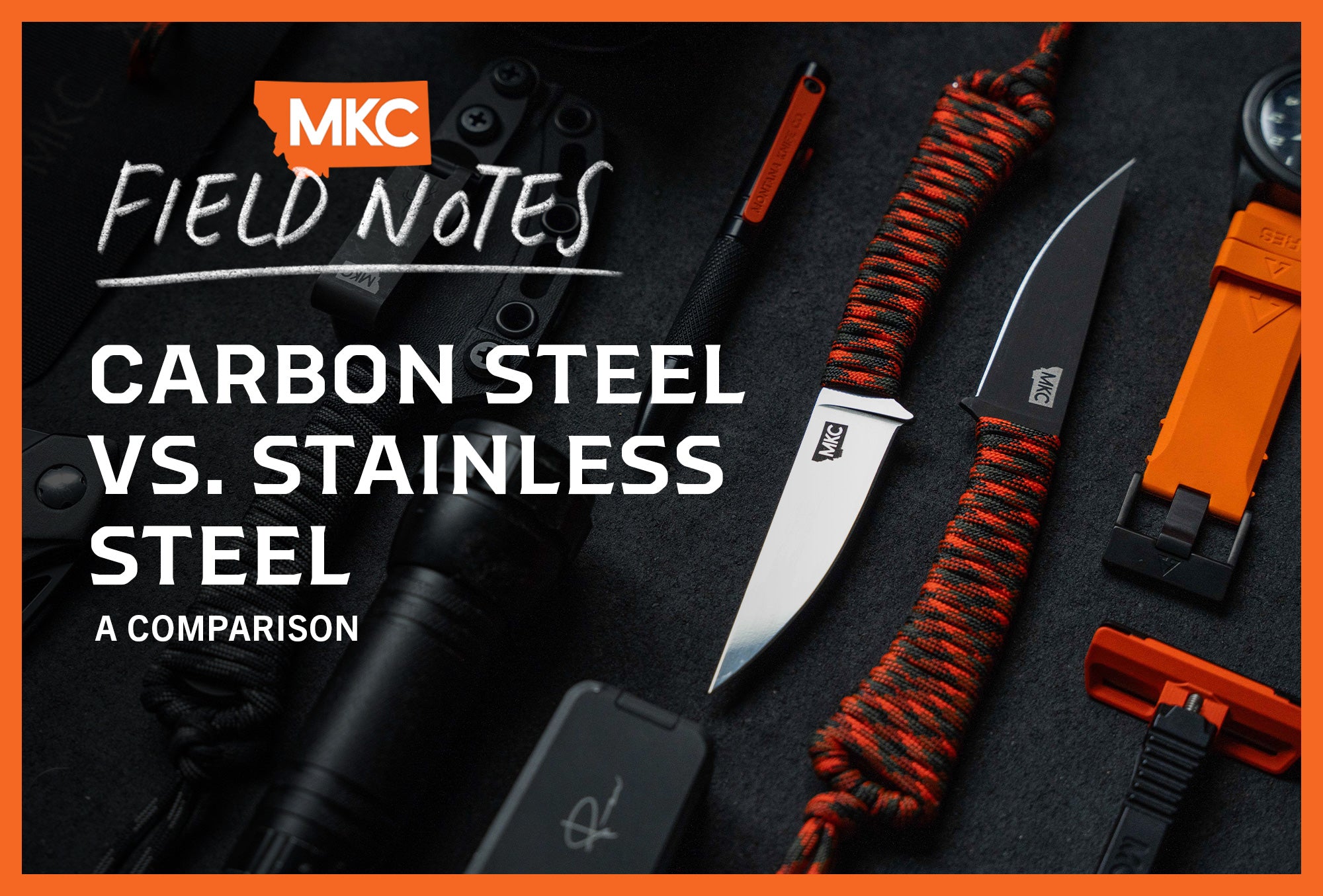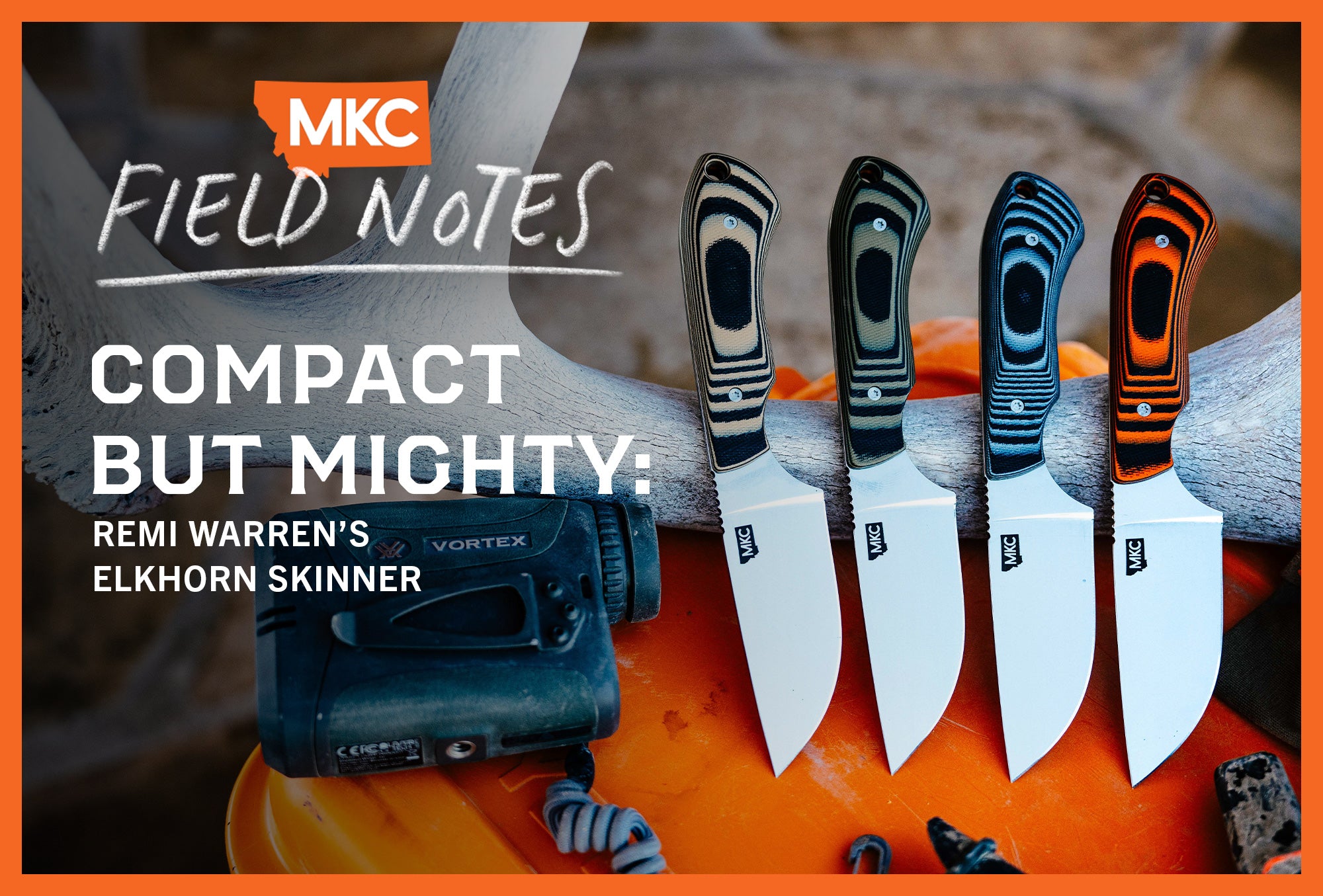Any knife can be a “survival” knife under the right conditions. Driving your car to town can turn into a survival situation if you get into an unexpected accident. Going out for a day hunt only a mile from your truck can turn into a survival situation if you lose your way.
Nobody plans to find themselves in a survival situation. That’s why our blades are versatile enough for self-preservation and self-defense.
It’s also why we call our “survival knives” bushcraft knives. We design them for people practicing the art of bushcraft. However, they have enough form and function for everyday tasks, too. Hopefully, that keeps them out of storage and at your hip, just in case.
All that said, when should you carry a bushcraft survival knife over a regular hunting knife? In a world with no shortage of options, how do you choose the best bushcraft knife for you?

How to Choose the Best Bushcraft Knife Size
A bushcraft survival knife should have some size to it.
In a survival situation, a knife with more heft cuts down small trees and chops wood for tinder. While you can use the tip of a large knife for some delicate tasks, small blades don’t work as well in the opposite scenario.
Size adds weight; a problem when you’re carrying a lot of gear. Finding the perfect balance between size and weight is a game we hunters play every time we head out.
A bushcraft survival knife should be six to eight inches long. When in doubt, carry an additional blade if weight isn’t an issue.
Best Bushcraft Knife Blades
A bushcraft survival knife blade must be durable enough to withstand chopping through wood or ice. The more abuse it handles, the better.
Sometimes, you may even need to use your blade as a pry bar or shovel. The best bushcraft knife has a robust tip that handles that kind of work.
The spine must also be thick enough to withstand the exertion of prying. While not all steels need to be thick to be strong, in this case, the thicker your blade, the better.
Edge retention is also less important here than toughness. While you can always sharpen your knife in the field, you don’t want it to chip under stress.
Of course, there are trade-offs when it comes to weight. The thicker and sturdier the blade, the heavier and more cumbersome it is to carry. That extra sturdiness is worth the trade-off when lives are at stake.
Best Bushcraft Knife Handles
The handle is a core element of your bushcraft survival knife. Effective bushcraft knife design prioritizes comfort and ergonomics, especially for prolonged use. If the handle is too round, the blade will turn in the hand when striking hard or at an angle.
The tighter you grip the handle, the more fatigued your hand becomes. Look for a handle with flat sides that orient the blade correctly. The handle should also require less grip strength over long periods of use.
Pay attention to the angle at which the blade exits the handle. The blade should center and align with the handle, which then aligns with your hand and arm. This ensures excellent control and leverage.
You also need to keep from slipping up the handle during use. The best bushcraft knife has a guard system that keeps your hand in place.
This is an important safety measure when you’re fatigued, cold, or wet. If you want to keep your fingers, your hand can’t ride up on the blade.
A good bushcraft knife handle also has an area to attach a lanyard or paracord. This attachment point ensures that your knife won’t harm you or a bystander if you lose your grip.
That said, don’t carry a bushcraft blade by lanyard for extended periods. It could catch on something, get ripped out of its sheath or off your person, get lost, or cause injury. If you need to carry your blade by its lanyard, tuck it underneath your jacket to keep it sheltered and safe.
Best Carry System for a Bushcraft Knife
The ability to carry a knife safely, securely, and accessibly is important in all situations. Part of our job at MKC is to consider the best way to carry bushcraft knives, regardless of your carrying method.
Bushcrafters use their knives more than any other tool. Our Marshall Bushcraft Knife, like many of our MKC knives, comes with a custom Kydex holster for convenient and accessible carrying. A secure and available knife you can access quickly in a survival situation is just as important as a sharp one.
A bushcraft knife isn’t just a knife in a survival situation, though. It’s an axe, a shovel, a hammer, a firestarter, and anything else you need it to be. A sturdy spine that handles sharp blows and ferro rod strikes is a tremendous boon in the field.
MKC’s custom Kydex holsters also have accessory slots for ferro rods and other attachments, making them just as handy as the knife itself.
Do I Need a Bushcraft Knife or a Hunting Knife?
Hunting knives and bushcraft knives have slightly different uses. While it seems crude to call a bushcraft knife a camping knife, it’s more similar to a camping knife than to a hunting knife.
Bushcraft knives are bulkier and often larger to handle the tasks you’d need around a campsite. You might use a bushcraft knife for building traps, cutting wood for fire, and clearing trails. You might use it in an emergency to cut a seatbelt, break a glass window, or defend your life.
Hunting knives come in tons of shapes and sizes, depending on the type of game you intend to use them for. Their common trait is that they’re designed to process game. That may be through skinning, caping, gutting, or butchering.
There’s no reason you can’t carry a bushcraft knife and a hunting knife with you aside from weight. If weight is an issue, find a tool that fills both roles.
It comes down to this: if you’re heading out to hunt, bring a hunting knife. If you’re heading out to practice primitive survival with minimal creature comforts, bring a bushcraft knife. If you’re doing both, bring both.
Aside from knives, there are tons of other bushcraft tools on the market. The MKC Hellgate Hatchet is one example. Bushcrafters often carry folding saws, hatchets, and multitools. If you can’t decide between a hunting knife and a bushcraft knife, you have plenty of other options that may better suit your needs.
The question of which knife to keep with you for emergencies is harder to answer. If you can’t carry an emergency blade, keep one in your car or your pack that would help in an emergency. Preparation is half the battle.
No matter what blade you keep with you, make sure it can protect your life. Even a Mini-Speedgoat helps in a survival or bushcraft situation. While a larger bushcraft knife would be more functional, any knife is better than nothing.
The Best Bushcraft Knife Designs: Final Thoughts
The best bushcraft knives have durable blades with good edge geometry and a robust point. They have a comfortable, strong, and durable handle with a secure and accessible carry system. (A sound carry system attaches to your pack or securely against your hip.)
The best tool for the job is the one that works best for you, whether that’s a knife, a hatchet, a machete, a multi-tool, or a different tool entirely. Whether you’re in a survival situation by choice or by accident, the best tool is the one you can make the best use of.
Of course, I’m partial to the knives we create here at MKC. Our bushcraft knife designs serve bushcrafters and survivalists everywhere, no matter the circumstances. However, getting out there and practicing with your tool of choice is infinitely more important than what you choose.
Get out there and practice. That way, when a real survival situation hits, you’ll be ready to take it in stride.
by Josh Smith, Master Bladesmith and Founder of Montana Knife Company














